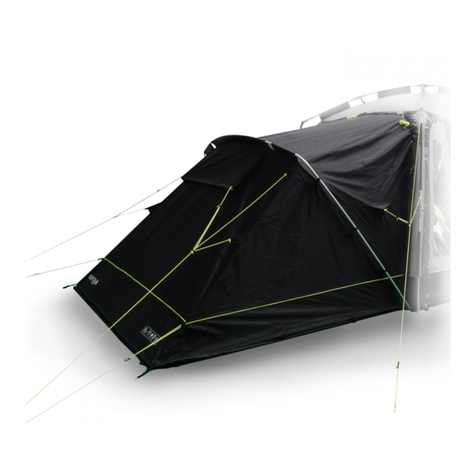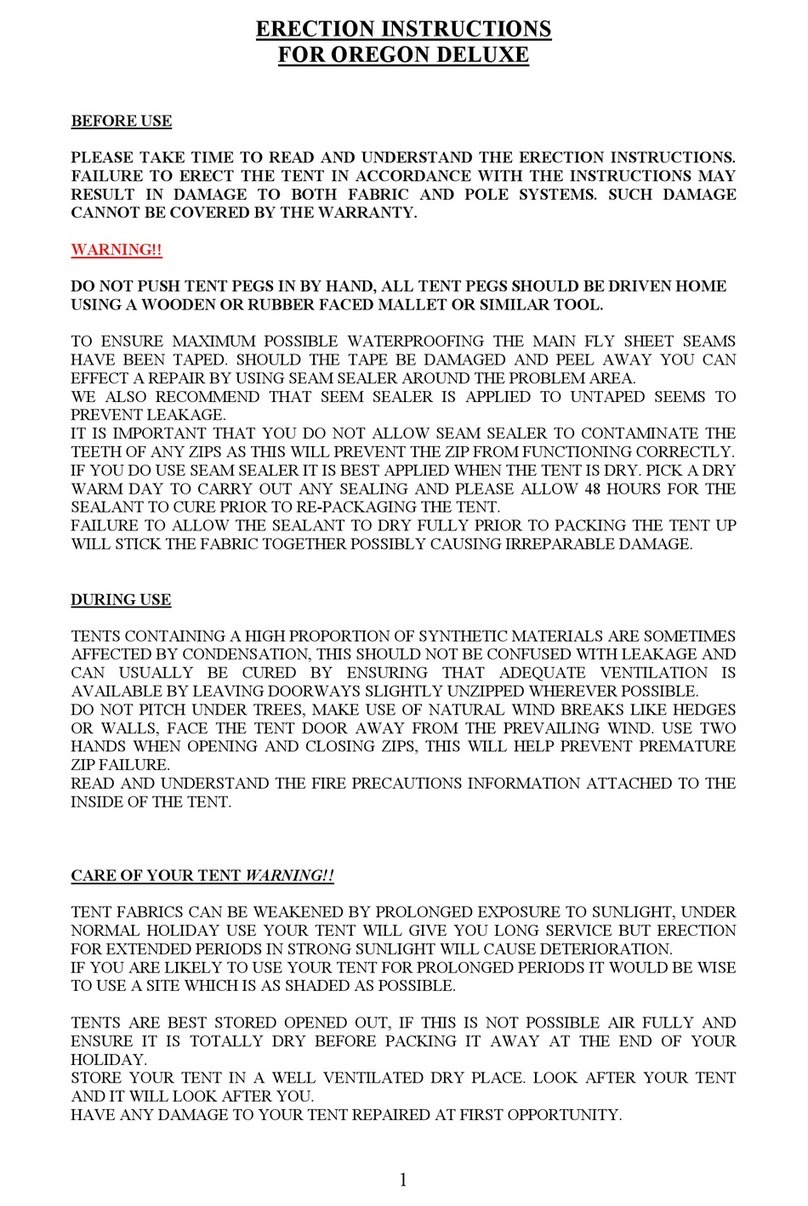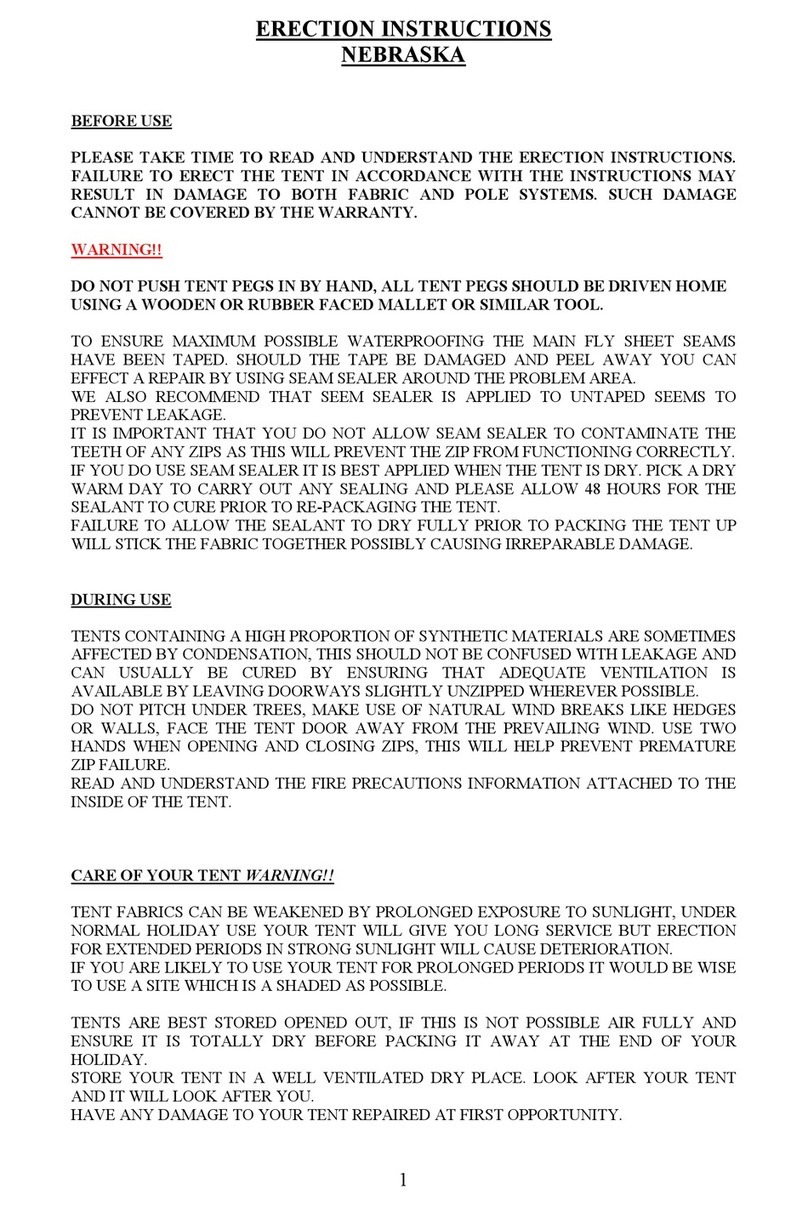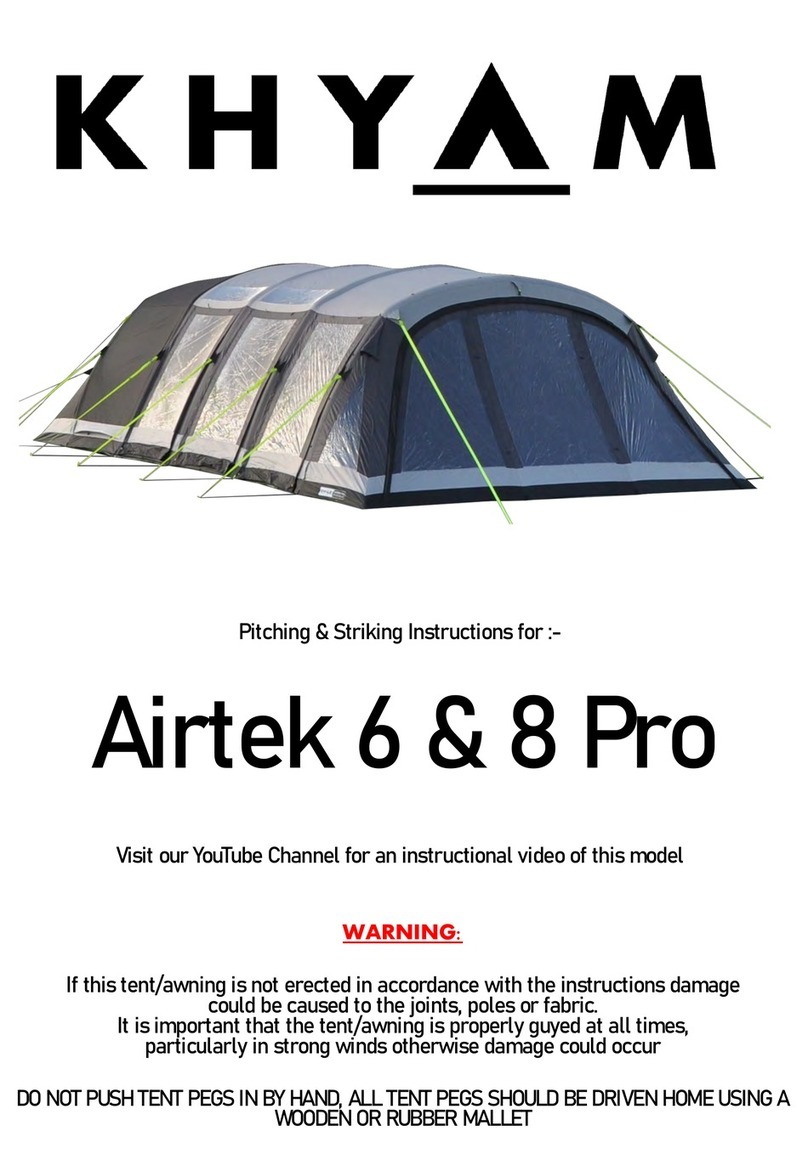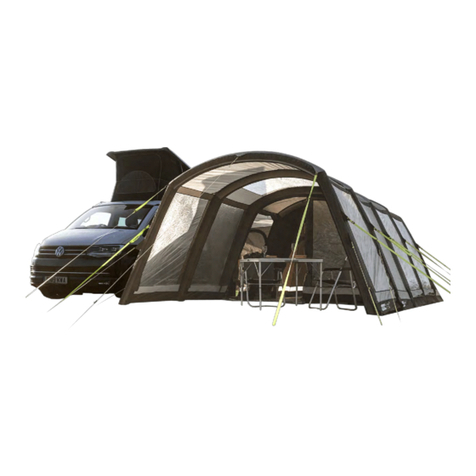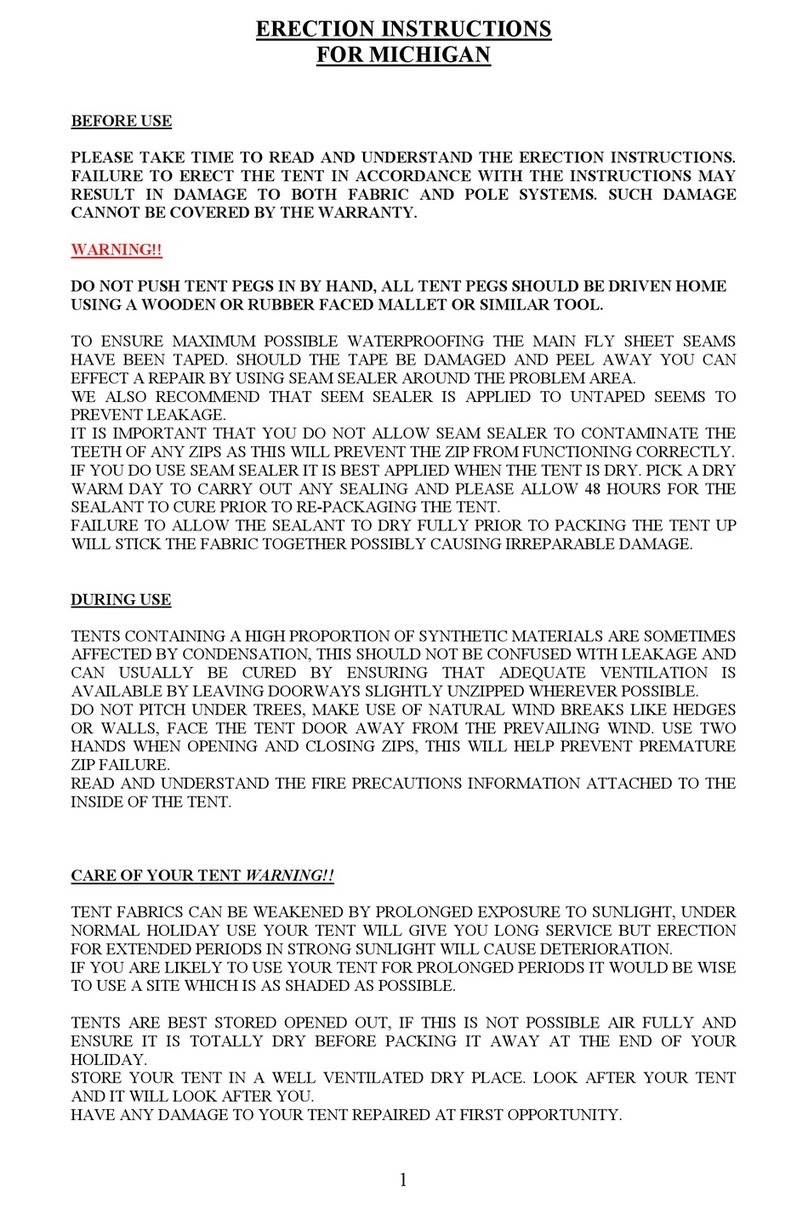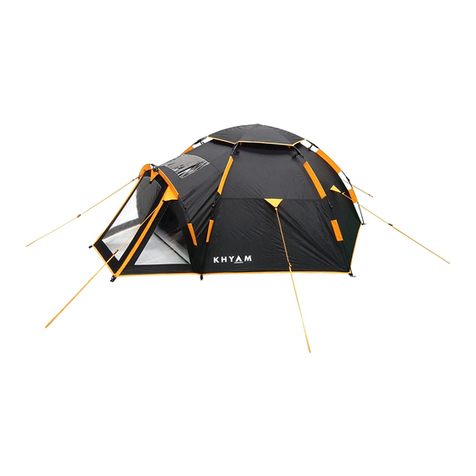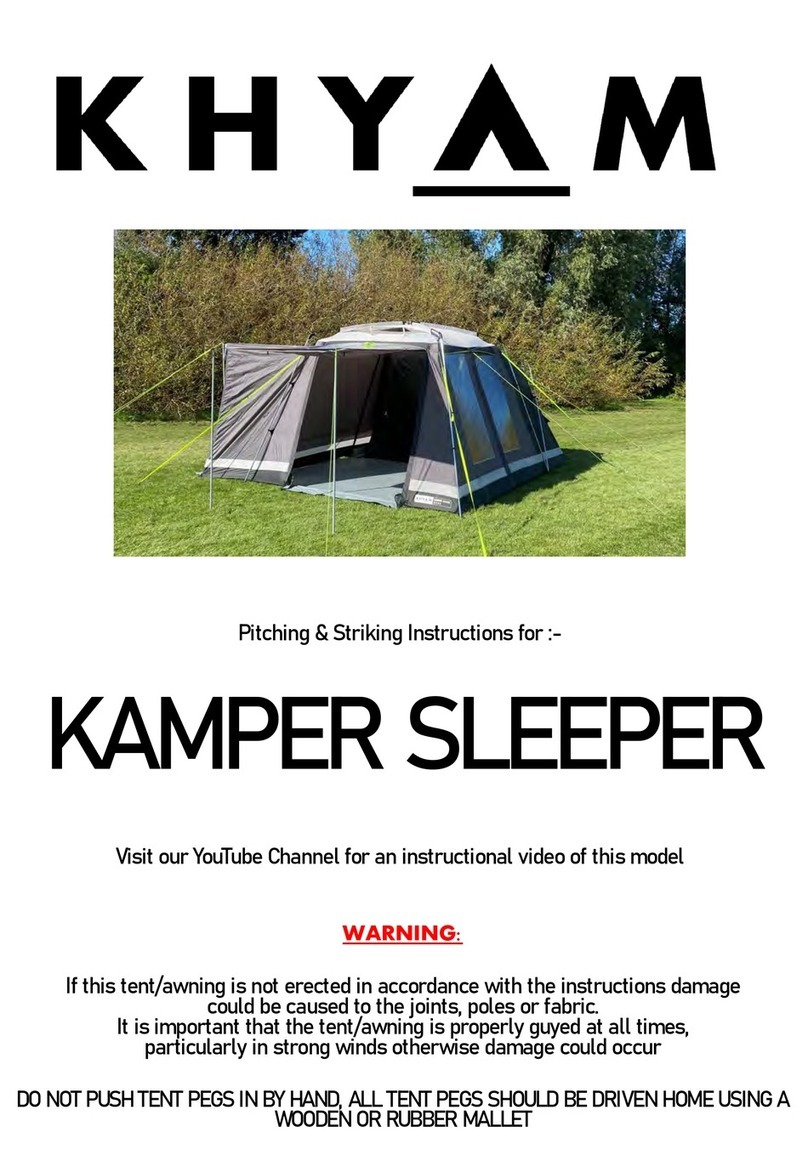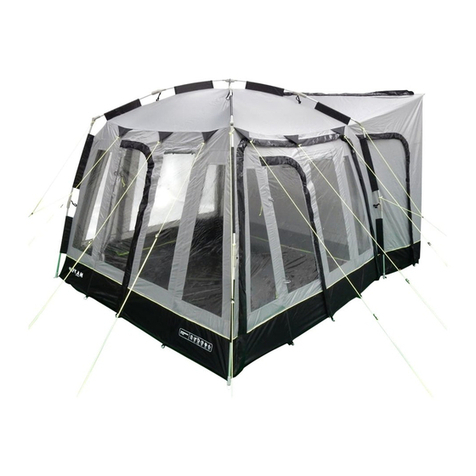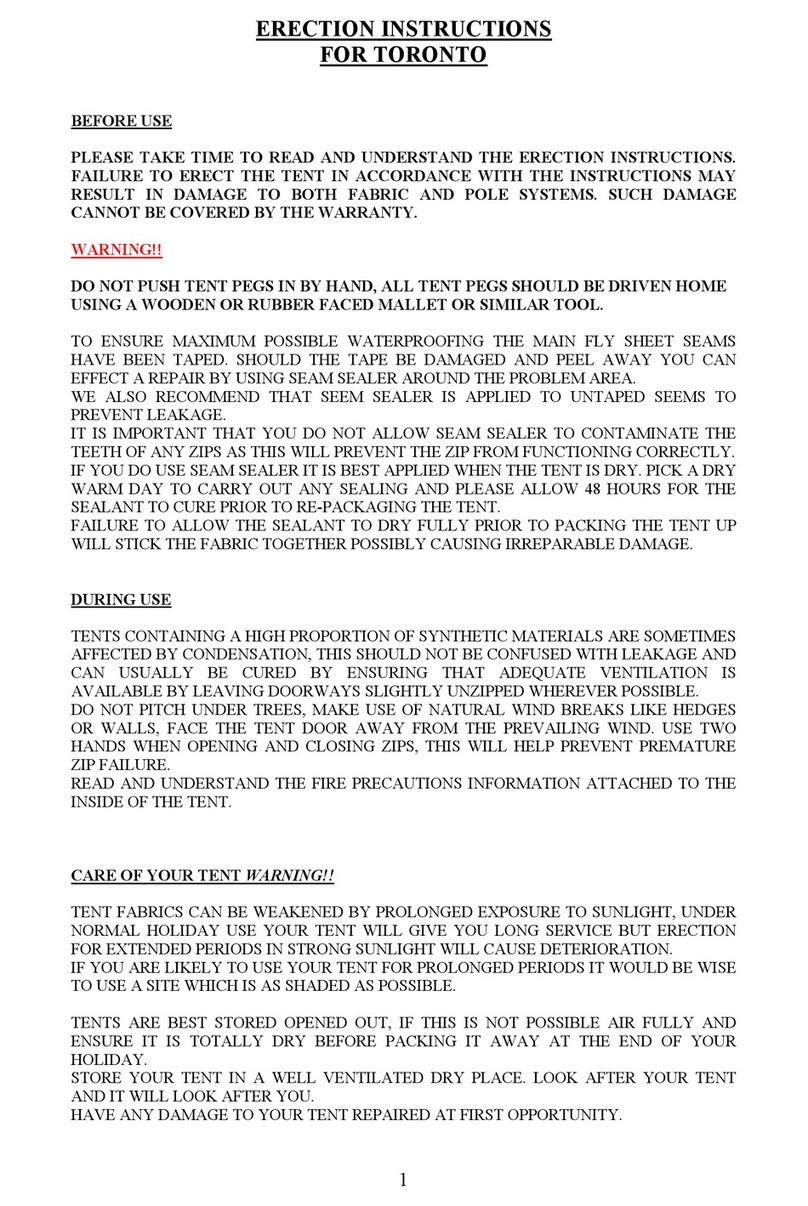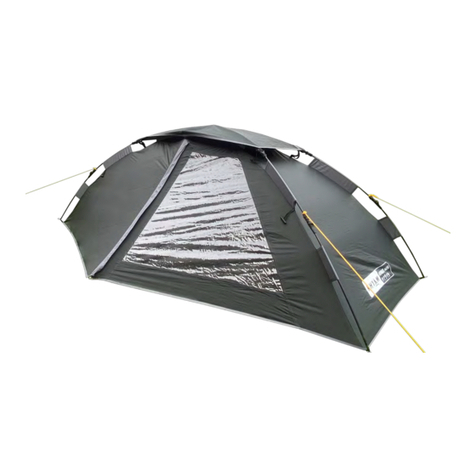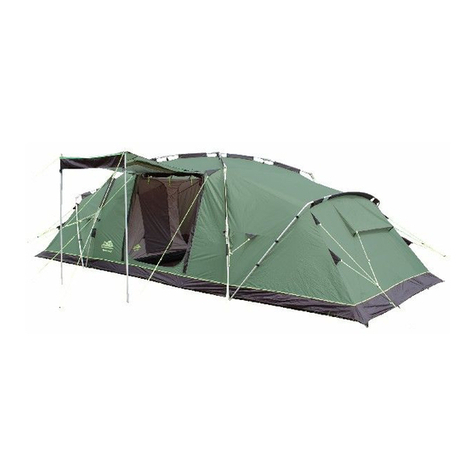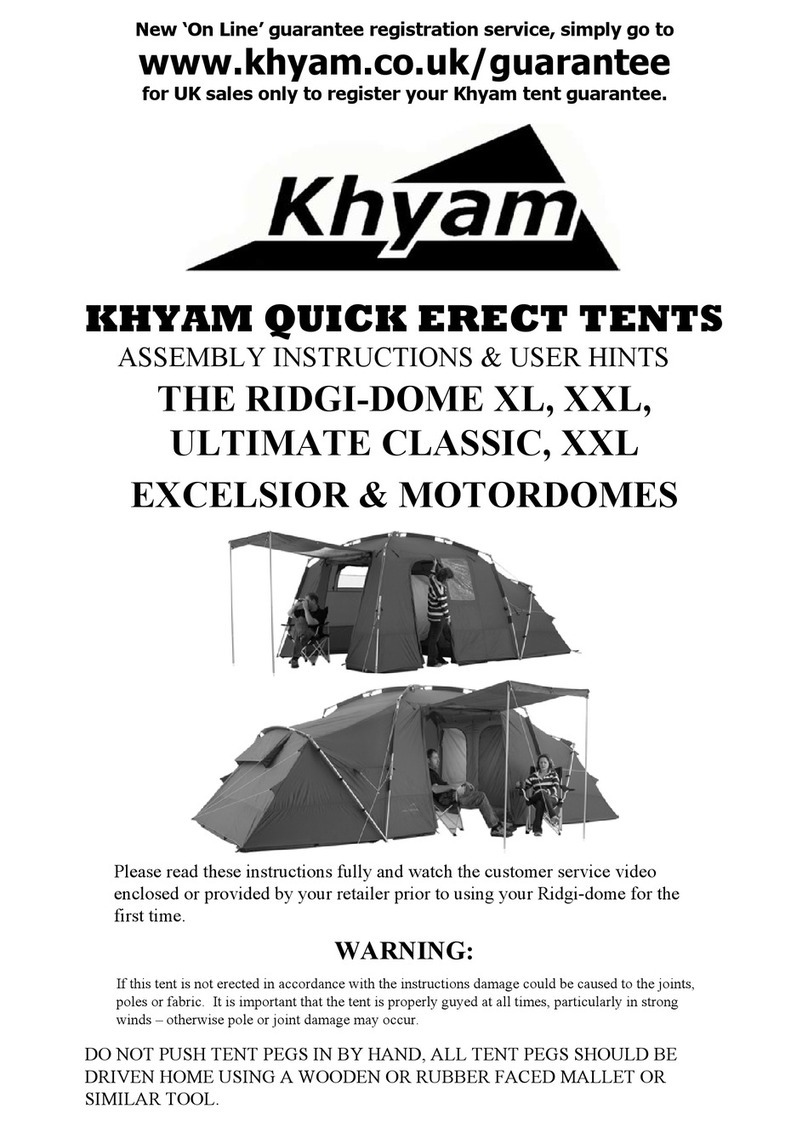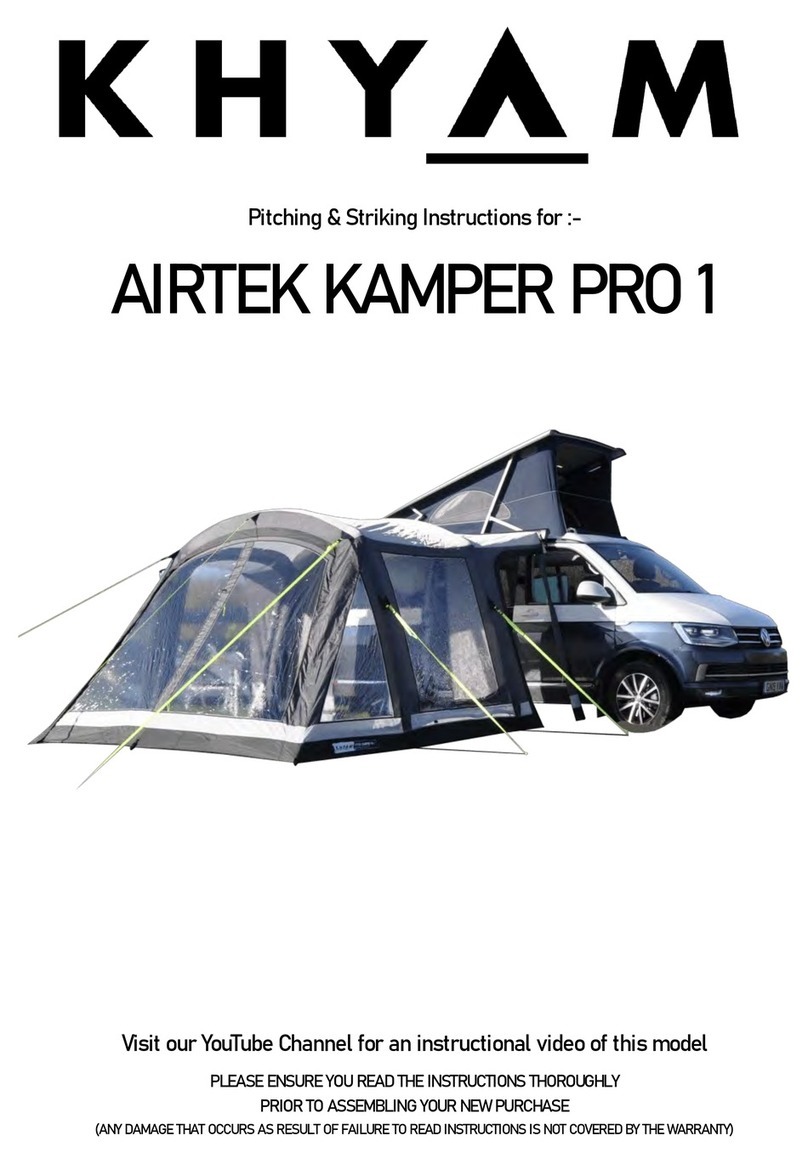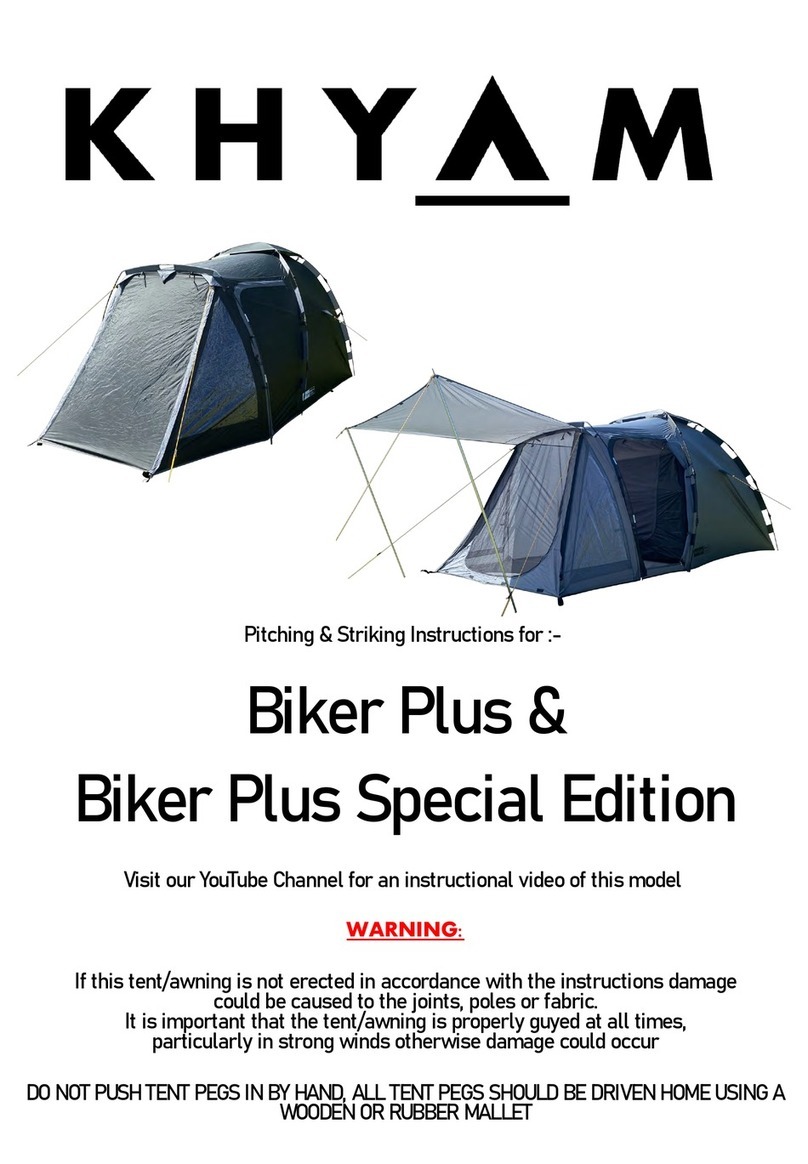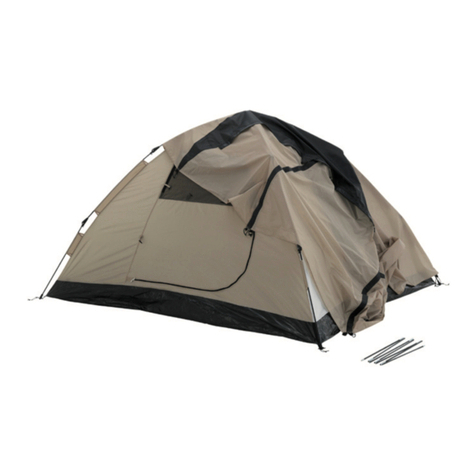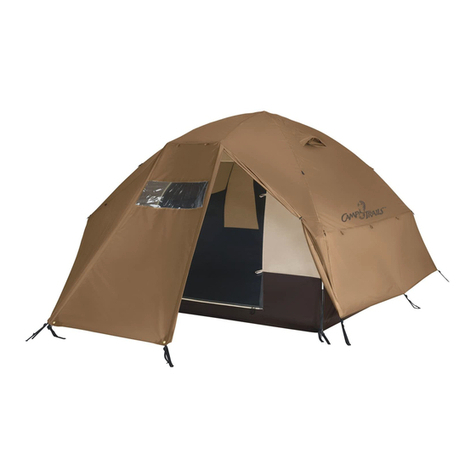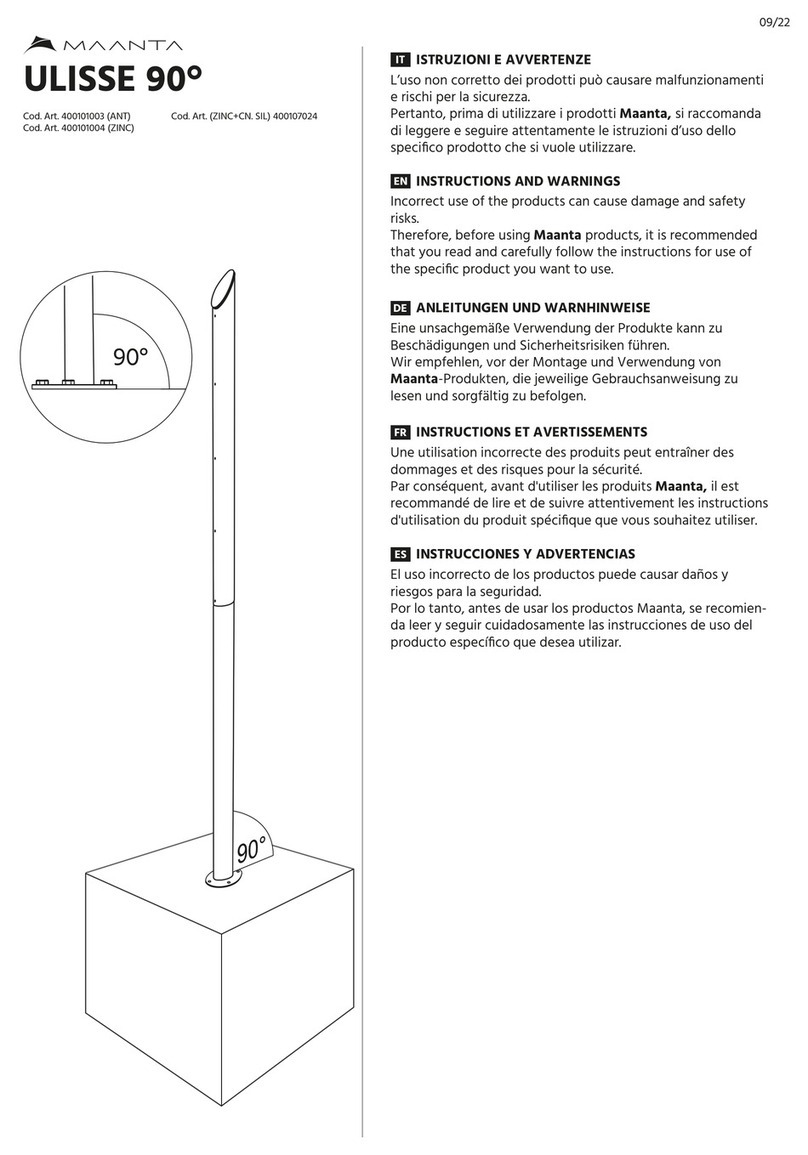
7
Lifetime Warranty, what's covered?
Q. What is covered in the guarantee?
All Khyam products are covered under our Product Lifeme Guarantee and we are aware that from me to me faults can appear.
Should a product fail due to manufacturing defects in workmanship and/or materials, or a genuine fault, we will repair the item free of
charge or replace at our discreon. If it’s no longer available, we’ll replace with an alternave from our current range that’s as close to
it as possible.
Q. What is NOT covered with the guarantee?
• Our guarantee covers genuine manufacturing faults or defects only and does not cover normal wear and tear. To help clarify
what this means, here’s a few pointers of things that wouldn’t be covered:
• Adhesive/glue/bonding. Adhesives will naturally dry and break down over me because of age, parcularly with heavy use and
poor aer care. This issue on items over 10 years old would not be considered.
• Wear and tear. Anything that’s reaching or has reached the end of its serviceable life. For example, if a zip breaks on a heavily
used item, it’s usually down to wear and tear rather than a fault.
• Accidental damage. Whether it’s caused by you or someone else –this includes rips, cuts, scus, tears, abrasions, odours and
stains aren’t covered.
• Colour Fading. All synthec fabrics will fade over a period of me. This is caused by ultraviolet radiaon present in daylight. Ultra
Violet radiaon will eventually cause a weakening of all synthec fabrics. As UV degradaon is a natural characterisc of syn-
thec fabrics, it is not possible for us to predict nor guarantee the life of any synthec fabric. It is now possible to treat the
ysheet of your tent with a good solar proof concentrate which will prolong the life of your tent. Further advice on re proong
and Solar proong is available in our FAQ’s secon of our website.
• Poor aercare. Your product should be cared for and properly maintained. If, for example, your tent is packed away wet and isn’t
properly dried, then any stains or leakage would be due to poor aercare, rather than being a manufacturer’s fault.
• Leaking waterproofs. Waterproofs that have reached or are close to the end of their serviceable life through use.
• Doors/openings on waterproof items. These are very dicult to guarantee as waterproof and there are circumstances that
would give the impression that there’s a leak when in fact there isn’t (for example, opening and closing doors in the rain or bring-
ing wet garments inside. even condensaon build up). Even when doors are protected by a rain ap, rain can sll sneak in when
doors are opened/closed - but rest assured that it won’t pass through tents ysheet.
• Damage caused by misuse or alteraon of the product.
• Any consequenal loss or damage resulng from a fault.
• Second hand items. Unfortunately, our guarantee covers only the original owner but that shouldn’t stop you having fun in some
great Khyam stu.
• Storm Damage. Products are not designed to withstand heavy storms, and we advise to strike any tent/awnings if winds are high
enough to cause damage.
• Shock Corded Fibreglass Poles. These are very dicult to guarantee as poor aercare or misuse can cause damage.
Q. How long are products covered for?
We go that bit further at Khyam. We don’t just guarantee our products for a set me frame. We like to be more exible because the
lifespan of our products varies depending on a few factors. For example, a heavily used or poorly maintained item will probably have a
shorter life than an averagely used or well-looked aer item. That’s why our team of experts consider each case individually. If we’ve
missed something that applies to your product, don’t worry - this is just a guide to help you, it’s not an exhausve list. Remember, our
team of experts consider every case individually. So, get in touch with whoever you bought it from and we’ll take a look.
Should you need to make a warranty claim please ll out a warranty form at www.khyam.co.uk
